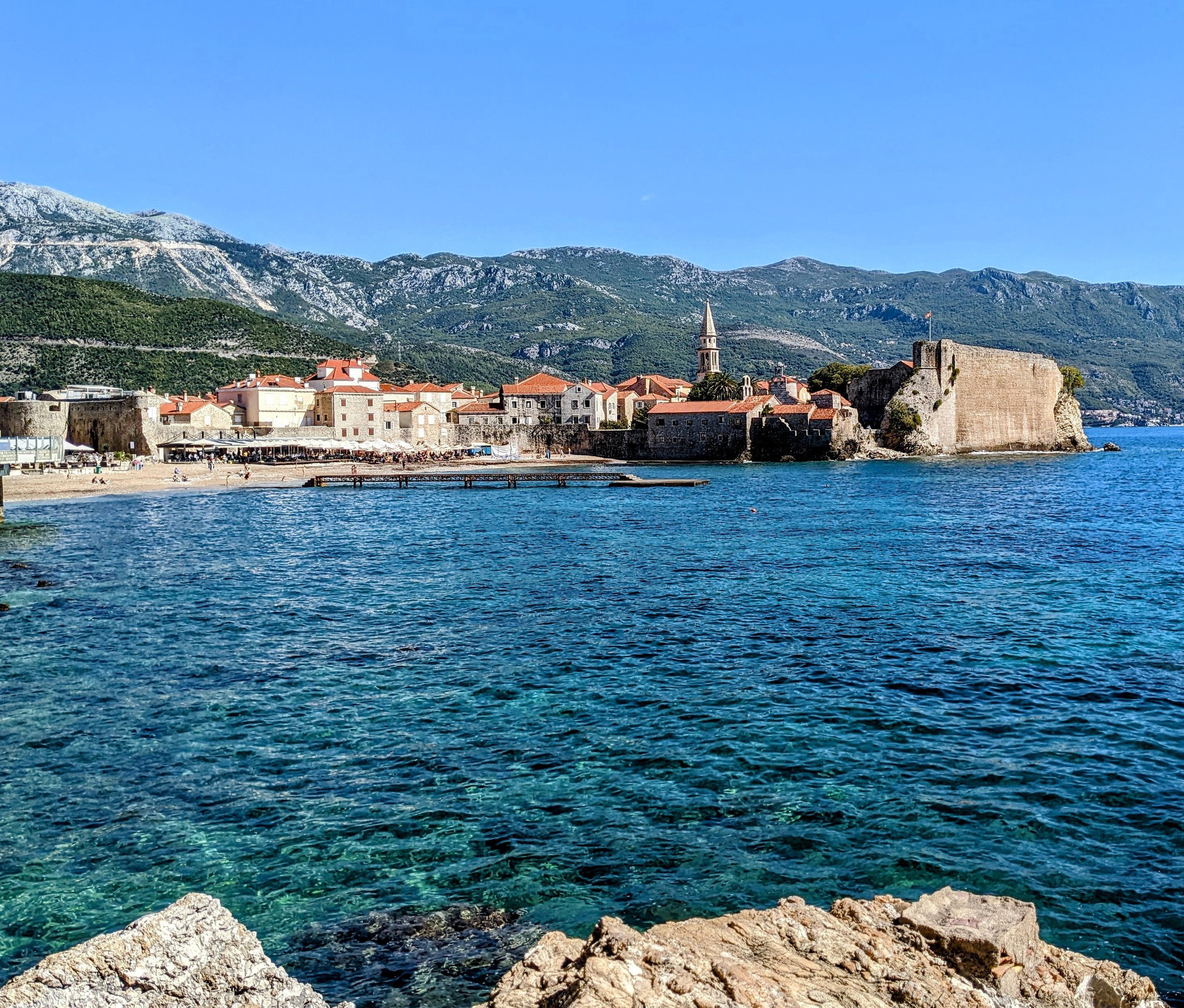Montenegro
Wild camping, Durmitor National Park
Montenegro was fanstastic. We entered coming down the coast from Croatia, and immediately felt just a little more relaxed. Montenegro shares Croatia’s gorgeous turquoise coast line, ancient walled cities and forts, and stunning national parks. But it is less crowded and developed for tourism, which makes for some fun challenges.
One of the last Balkan nations to become independent, Montenegro finally split from its union with Serbia as part of the Federal Republic Yugoslavia in 2006. (Serbia and Montenegro were the last two regions united under the Yugoslavian name). The predominant religion is Orthodox Christianity, the people have adopted the latin alphabet alongside the cyrillic, the official currency is the Euro, and they are actively seeking EU membership.
Border insurance office - two weeks of auto insurance for $50 (our German company, Tour Insure does not cover our US plated vehicle in non EU countries)
First stop over the border - roadside grilled meat stand (Andy smiling with hungry anticipation behind the flowers). Used our best awkward sign language and lots of smiles to order in Macedonian.
Awesome bread with more sausages (cevapi) than Andy can hold
Our route through Montenegro, (with a little bit of in and out with surrounding countries).
Highlights:
Kotor -16th century fortified town with medieval architecture and winding cobbled streets
Budva - idyllic walled town built on the Adriatic sea, medieval streets to wander and clear turquoise ocean coast
Durmitor National Park - so much variety, stunning highland mountains, deep river gorge and glacial lakes
After filling up on meat, we made our way to Perast, a captivating little village on the Bay of Kotor. It featured steep mountains right down to the blue water, with stone houses and churches built on the narrow swath of flattish land in between. The scenery and the setting made it feel like a chic European destination, yet it had a quiet and homey Montenegrin feel.
Perast, Montenegro
Nineteen churches in a tiny village of 250 people
Andy scanning for fish
Then continuing along the Bay of Kotor we stopped off to explore the intriguing fortified town of Kotor.
Walls of the ancient town of Kotor coming down to an inlet from the bay
Small cobbled alleys within the walls
Walls going all the way up the cliff
That night we camped at the ruins of an Austro-Hungarian fort above town
Local resident was intrigued by the truck. I am as vigilant as a cat to steal cream. It was so amazing to wander around the historic sight on our own
One of our favorite sites with the evening light
And in the morning a different visitor sharing the view down on the bay
The next day we made our way inland to Cetinje for some history lessons.
The switchbacks on the coastal mountain routes in Montenegro are no joke, cliff-hugging crazy turns - view on our Garmin Overlander route
As a forester, Andy loved the views with the tall cypress trees peeping out of the low-level shrubs.
In Cetinje, we spent a full afternoon at the National Museum of Montenegro. Informative exhibits with information in English (helpful as we speak no Montenegrin) took us through time from the stone ages to modern day. We have found that each country we visit in the Balkans has a unique idenity and past despite shared experiences during WW2 and as part of Yugoslavia. Montenegro is known for its July 13th uprising in 1941, during WW2 against the Italian fascist occupation. Rural villagers attacked the Axis powers and regained ground. French philosopher Jean-Paul Sartre said “The July 13th uprising in Montenegro is one of the greatest achievements of the libertarian tradition of the twentieth century.” Unfortunately it was not all a success story, the country suffered enormous losses in WW2, with 10% of its population being killed.
National Museum of Montenegro - well worth a visit
Our camping spot after a day in Cetinje - on a hill above town
With the odd bonus of an open cave to explore - with crumbling walkways and staircases.
And if that wasn’t enough, an exploration up hill led us to a small bell tower where Andy was thrilled to actually be able to ring the bell. Dawn shook her head and pretended it wasn’t happening.
It was a stormy night, the rain on our pop up roof so loud that we resorted to watching our Prime show with captions on.
From Cetinje we went back to the Adriatic coast to explore Budva, oroginally built by the Venetians.
Drive down from the hills into Budva
More narrow cobbled streets!
Old city walls along the water
Mid October, everywhere we went there were the signs of a busy season being put away
Then on to our final destination in Montenegro, one of the most stunning national parks we have visited in the Balkans, Durmitor National Park (alongside the Accursed Mountains in Albania).
Rugged wild coastline
Some nights you just make do. Luckily road traffic goes way down after dusk.
Stopping along the way to refill our water at a public well, common throughout the Balkans. Running it through our UV system just in case
Heading into Durmitor National Park, with the Tara river below
Tara River Gorge
Famous Tara River bridge
Hiking into glacial lakes - Crno Jezero
Side by side lakes - iconic hike in the park
Then into the highland mountain area
Our all time favorite camping spot in Montenegro
Leaving the mountains behind
Another week well spent in the Balkans. As always, thank you for reading and safe travels out there!













































